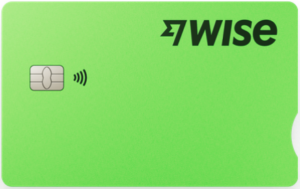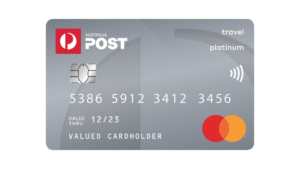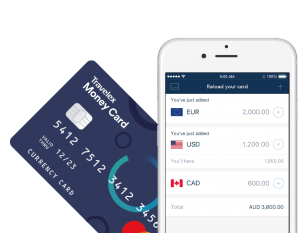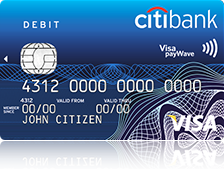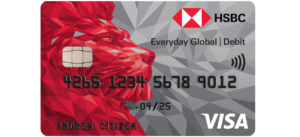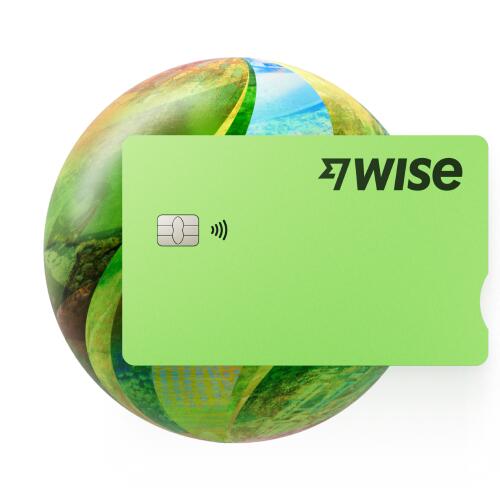The 6 Best Prepaid Travel Cards for Australians 2025
Here is a list of the 6 best prepaid cards you can take with you on your travels and the positives and negatives for each one:
Prepaid travel money cards let you load money - either in AUD or the foreign currency you need - in advance, which you can then use as you travel, for spending and withdrawals. Lots of cards let you top up and manage your account through an app, which means you can always keep up with your money, even when you’re away from home.
Picking the right prepaid card can mean you get more convenient ways to spend and withdraw when you’re abroad - and lower overall costs, too. Let’s look at some of the best prepaid travel cards for Australians, so you can pick your perfect match:
Wise - our pick for prepaid travel card
- Free ways available to top up your card and account
- No annual fee, hidden transaction fees or exchange rate markups
- No minimum balance requirements
- Allows you to make payments and withdrawals in 150+ countries
- Local and SWIFT account details in 8+ currencies, including AUD, GBP, USD, EUR, CAD and NZD
- Physical and virtual cards available
Find out more about the Wise card.
With this card:
- It's very easy to set up and order
- Available as a virtual card
- You can receive foreign currency into a multi-currency account linked to the card
- Pay with your Wise card in most places overseas where debit cards are accepted
- You can transfer money to a bank account overseas
It's not all good news though
- There is a 2% ATM withdrawal fee when you withdraw over $350 during a month
- It takes 7-14 days for delivery
Go to Wise or read our review.
Revolut - low fees
- Choose from several different accounts based on your transaction needs
- Get some weekday currency conversion which uses the Revolut rate with no extra fee
- Very easy to use app with extras like budgeting tools
- Standard accounts have no monthly fees
- You can use it to transfer money to a bank account overseas
With this card:
- No purchase fee or minimum balance requirements
- No fee to spend a currency you hold in your account
- Account plans offer some ATM usage with no additional Revolut fees monthly
It's not all good news though
- 2% ATM withdrawal fee when you withdraw over your plan limit during a month
- Metal plans cost $24.99 a month, which can really add up if you are not using it often
- Additional fees of 1% for currency exchange on a weekend
- 0.5% fee when you exhaust your plan’s currency exchange limit
Click here to see the full list of cards and how Revolut compares
Australia Post Prepaid Travel card - lock in exchange rates
- Load up to 11 different major world currencies
- Spend and withdraw easily around the world
- Get access to extras like free wifi when you travel
- Manage your card in online and via an app
- Transfer instantly to another Travel Platinum Mastercard
With this card:
- Load up to 11 different currencies for easy spending and withdrawals
- Lock in exchange rates so you know what your travel money budget is in advance
- Get extra perks like free wifi when you load 100 AUD or more
- Get fraud protections from Mastercard
It's not all good news though
- 3.5 AUD international ATM fee, or 2.95% domestic ATM fee
- Exchange rates to add money in a foreign currency or spend a currency you don’t hold are likely to include a markup
- Some fees apply depending on how you top up your account
Travelex - no fees for international ATM withdrawals
- Load up to 10 major currencies at a time
- Spend and withdraw anywhere Mastercard is accepted
- Contactless payments so you can just tap and go
- No Travelex fees for international ATM withdrawals
- Free to spend currencies you hold in your account
- Order online and have it delivered to your home - or collect in store
With this card:
- Top up and hold up to 10 currencies at a time
- View and manage your account online
- Spend online and in person, and make withdrawals as you travel
- No membership or account fees to pay
- Get exclusive Mastercard discounts and perks
It's not all good news though
- Inactivity fees apply if you don’t use the card for a year
- Exchange rates to add money in a foreign currency or spend a currency you don’t hold are likely to include a markup
- Not all major currencies are supported for holding - double check they have the currency or currencies you need
Go to Travelex or read our review.
Citibank Saver Plus - best for use at home
- No international ATM or transaction fees
- Fee-free international money transfers to any account worldwide
- SMS notifications through Citi Alert
With this card you can:
- withdraw money for free at over 3000 ATMs Australia-wide and overseas
- take advantage of no foreign transaction fees, monthly fees, or minimum opening balance
- transfer money to friends and family anywhere in the world for free
It's not all good news though
- Cash deposits available within 24-48 hours
- Can’t have two cards active at the same time
- $5 account closure
HSBC - no international transaction fees
- Hold and exchange 10 currencies: AUD, USD, GBP, EUR, HKD, CAD, JPY, NZD, SGD, and CNY
- No account opening or annual fees to pay
- No foreign transaction fee and no HSBC ATM fee at home or abroad
- Some cashback earning opportunity on local spending
- Easy online overseas transfers - 8 AUD fee and exchange rate markups apply
With this card:
- Hold and exchange 10 currencies
- No account opening fee, no ongoing fees
- Get up to 2% cashback on eligible card spend
- No HSBC ATM fee
- No international transaction fee
It's not all good news though
- 8 AUD fee for sending money overseas
- Cashback on low value transactions made in Australia only
- Limits apply on how you can use CNY within your account
Read our HSBC Everyday Global Account review.
What are Prepaid Travel Cards?
Prepaid travel cards are a good international card alternative to carrying cash. They look like credit or debit cards, but they function differently.
You're able to load the card with a set amount of money in the currency you need and can use it to make purchases online, in stores and to withdraw money at ATMs.
Most travel cards allow for multiple currencies to be loaded onto the card. So it's important to know what currency you'll be using on your travels. Airlines also offer prepaid cards so the money you spend can earn you reward points.
Find out how our 5 best prepaid travel cards for Australians compare in our best and worst travel cards article.
Looking for something different?
Read our guides on:
- The best travel debit cards
- The best travel cards for Europe
- The Wise debit card review
- Best virtual debit cards for Aussies

How does a prepaid travel card work?
Order a prepaid travel card online, through a provider app, or - in some cases - pick one up at a physical location or store. Generally to get your card you’ll need to show or upload some ID documents for verification - this is to keep your account safe and is a legal requirement.
Once you have your card account open, you can load funds. Different cards have their own supported methods for topping up, which usually include bank transfer, PayID, credit and debit card, and which may also allow you to deposit cash in some cases. Once you have funds on your card, you can switch to the currency you need for overseas spending. In some cases you can also leave your funds in AUD and just allow the card to convert for you - but do check that no additional fees will apply in this case.
Prepaid travel cards can then be used to tap and pay, make withdrawals and shop online. You can often also add them to mobile wallets like Apple Pay for convenient spending. Because your card isn’t attached to your everyday account it’s secure, and you can only spend the funds you’ve loaded, which means there’s no chance of accidentally blowing your budget.
Fees and charges when travelling abroad
If you’re planning to rely on your debit or credit card when you’re away from home, it’s good to know that banks usually charge extra fees when using their services in other countries. Let’s explore which fees you may need to look out for when using a bank card abroad.
When paying with your bank card abroad
The primary fee to know about when you use a bank card abroad is the foreign transaction fee. Where this applies, it is added to all transactions made in a foreign currency - when you travel, or when you shop online with an overseas retailer for example.
Here are the foreign transaction fees you’ll want to know about from some major Australian banks.
| Bank | Foreign transaction fees (%) |
|---|---|
| Westpac (debit card) | 3% |
| ANZ (debit card) | 3% |
| NAB (debit card) | 3.5% |
| CBA (debit card) | 3.5% |
*Data correct at time of research - 14th November 2024. Sources: Westpac; ANZ; NAB; CBA
Fees when withdrawing cash with your bank card abroad
There is likely to be a fee when taking money out of an ATM overseas. Your own bank is likely to charge an ATM fee which is often higher compared to using an ATM at home. The ATM operator might also charge a fee. Some banks do offer discounts or waived fees if you use an ATM operated by a partner bank in the foreign currency.
Usually, any ATM fee will apply on top of the foreign transaction fee we described earlier, which can be 3% or more.
| Bank | International ATM fees |
|---|---|
| Westpac (debit card) | 0 AUD - 5 AUD |
| ANZ (debit card) | 5 AUD |
| NAB (debit card) | 2 AUD - 5 AUD |
| CBA (debit card) | 5 AUD |
*Data correct at time of research - 14th November 2024. Sources: Westpac; ANZ; NAB; CBA
Are there any travel prepaid cards with no fees?
You may find that some providers offer travel prepaid cards with no listed foreign transaction fees, but in general it’s not possible to completely avoid extra costs when spending in foreign currencies. Where a card states no foreign transaction fee, the costs you pay are likely to be built into the exchange rate you’re given when you switch from AUD to the currency you need to spend with, instead.
If you’d like a low cost card which lets you spend conveniently around the world, check out Wise and Revolut as handy options which let you convert your funds to the currency you need first and spend in the foreign country like a local once you’re there. You’ll be able to clearly see what currency conversion is costing you, and can choose to exchange at a point that the rates look good.
Loading money on to your prepaid debit card
You’ll find that different prepaid debit cards have their own ways to add funds. Usually you can choose between options such as:
- Bank transfer initiated by yourself or received from a third party
- BPAY payments
- Top up with credit or debit card
- Add money with a wallet like Apple Pay
- Add cash in a retail location
Pros and cons of travel prepaid cards
Prepaid cards can be a handy addition when you’re abroad, as they are secure and convenient to use for payments and withdrawals. However, they’re not the only option. If you’re not sure about whether a prepaid card is right for you, check out these Pros and Cons to help you decide:
| Travel prepaid cards Pros | Travel prepaid cards Cons |
|---|---|
| ✅ More convenient than carrying cash, with easy access to ATMs to withdraw when you need to
✅ Not linked to your primary day to day account, which can be more secure and make budgeting easier ✅ Some accounts let you buy currency in advance to lock in exchange rates when they’re good ✅ You may be able to access better exchange rates and lower fees compared to using a regular bank card |
❌ Some prepaid cards have fairly high fees - including charges when you add money to the account.
❌ Not all prepaid cards support a broad range of currencies - check the currencies you need are covered ❌ Prepaid cards aren’t always accepted for things like paying security deposits - so it’s safest to have a credit card as well |
Read more on how to find the best travel cards with no foreign transaction fees
Who is a prepaid debit card for?
A prepaid debit card is handy for many different customer needs. For example, you may choose a prepaid debit card in the following situations:
- You’re planning travel and want to set your budget in advance with no chance of accidentally overspending
- You want to be able to hold and exchange a selection of foreign currencies all in the same account
- You want to increase security by using a payment card that’s not linked to your main everyday account when you travel
- Some cards also offer other perks like ways to receive foreign currency payments conveniently, or cashback
Are prepaid travel cards safe?
Spending with a card is generally safer than carrying lots of cash - and travel cards usually have the extra benefit that they’re not linked to your main everyday transaction account. This means that even if you’re unlucky and someone steals or clones your card, they can't access your full bank balance.
Another handy security feature to look out for is virtual card options. Some providers like Wise and Revolut let you generate a virtual card which is only available on your phone. You can use it to transact, then freeze it immediately so it can not be used again until you reactivate it. This can be reassuring when you’re in an unfamiliar place.
How can I get a prepaid travel card?
Different prepaid cards have their own order and activation processes. However, to comply with local and international law, providers will usually need to see some ID before you’re able to get a card - this verification step may be available online by uploading images of your paperwork, or in person by visiting a branch.
Here’s an outline of the basic steps you’ll take to get a prepaid travel card:
- Pick the right card for your needs
- Visit the provider’s website or app - or call into a branch if you’d prefer a face to face service
- Complete a travel card order from, which will include your personal information
- Get verified - usually this involves showing or uploading ID like a passport or driving licence
- Add money to your card, which could be in cash, with a bank card, or by bank transfer
- You can now get your card, and manage your account online or in the app
If you’re ordering a card in person you’ll be able to start using it right away. If you’ve ordered online for delivery, you’ll need to wait a few days, to a couple of weeks, depending on the provider you’ve picked, for your card to be available. You might be able to access virtual card details in the meantime, to start spending right away.
How to choose a prepaid debit card
There are many different prepaid debit cards on the Australian market - so picking the best one for you will require a bit of research. Starting with this guide, compare a few different prepaid debit cards based on features and fees. Here are a few pointers to think about:
- Make sure you know about any opening or card delivery fee which will apply once you order your card
- Check how long it’ll take to get your card if you’re ordering online for home delivery
- Make sure the card you pick can hold a broad selection of currencies, so you can use it for more than one trip away
- Check the fees for adding funds, making ATM withdrawals and converting currencies
- Look to see if there are any account close, cash out or dormancy fees that apply once you stop using the card
- Make sure the card is well rated by other users, and from a trustworthy provider
Who is a prepaid debit card for?
A prepaid debit card is handy for many different customer needs. For example, you may choose a prepaid debit card in the following situations:
- You’re planning travel and want to set your budget in advance with no chance of accidentally overspending
- You want to be able to hold and exchange a selection of foreign currencies all in the same account
- You want to increase security by using a payment card that’s not linked to your main everyday account when you travel
- Some cards also offer other perks like ways to receive foreign currency payments conveniently, or cashback
What’s the difference between a travel prepaid card and a credit card?
You’ll probably use both a travel prepaid card and a credit card in the same way to spend and withdraw, but how they work is quite different.
To use a prepaid card you must first add a balance to your card account. You can then spend to that limit, and your card will be declined once you run out of money. Funds are deducted from your account instantly when you spend. There’s no interest to pay and no penalties - just add money as and when you need it for spending, and top up as you go.
A credit card works differently in that you’ll be able to spend to your card’s credit limit before you’re issued a bill at the end of the month. You’ll need to clear your bill in full and on time every month to avoid interest and penalties - if you don’t pay in full, interest accrues which pushes up the costs in the end.
Tips to use your card abroad
Here are a few handy pointers to help you get the most from your card spending abroad:
- Always pay in the local currency wherever you are. You may be asked if you’d prefer to pay in AUD, but this will leave you open to higher fees and a poor exchange rate.
- Take several different means of payment with you, including cards on different global networks, in case one is unavailable or not accepted at a particular retailer
- Check your card’s fees and rates before you use it - in particular look at the costs for ATM withdrawals which can be much higher when you’re overseas
- Ask your bank or card provider if they have ways of reducing or waiving ATM fees - some banks are part of a global network which offer free or low cost ATM use to other customers of other banks
- Get yourself a low cost travel card from a provider like Wise or Revolut before you travel to access secure spending and withdrawals with low costs and great exchange rates
FAQ - 6 Best Prepaid Travel Cards
Are prepaid cards free?
Prepaid cards may be free to order, or you may pay a small one time fee, depending on the provider and card you pick. Once you have your card you may also pay transaction fees such as exchange rate markups when you switch currencies, and ATM withdrawal charges. Read the card’s terms and conditions carefully so you’re aware of the costs involved.
What are the best prepaid debit cards for international travel?
There’s no single best prepaid debit card - it’ll come down to your personal preferences, where you’re travelling, and the type of transaction you need to make. Pick a prepaid card which is easy to use, which supports the currency you need, and which offers a good balance of low fees and good exchange rates.
What is the best reloadable prepaid card?
There’s no single best reloadable prepaid debit card. Use this guide to compare a few options to pick the one that’s right for you, thinking about features, fees and the range of supported currencies you’ll need.
Should I use a Mastercard or Visa for overseas?
Both Visa and Mastercard are very broadly accepted globally. It’s often a good idea to have a prepaid, debit or credit card on each of these networks, so you’ll always have a backup if for some reason one network isn’t available wherever in the world you are.
Are prepaid currency cards worth it?
Picking the right prepaid currency card can help you save money on currency exchange and access low fee international transaction services. You might also get extra perks like easy ways to lock in exchange rates in advance, so you can get a good deal and fix your travel budget before you go away.
Your currency knowledge centre
5 Best Debit Cards for Australians Travelling Overseas
Travel debit cards are a good alternative to carrying cash. They also offer the convenience of a credit card, but work differently. Here is a list of the 5 best travel debit cards you can take with you on your travels and the positives and negatives for each one.
- Read more ⟶
- 2 min read
Wise Debit Card Review
The Wise Debit card give customers an easy way to spend their balances in multiple countries. With interbank rates and low fees, this product is available in Australia for both personal and business customers.
- Read more ⟶
- 6 min read
8 Travel Traps to Avoid If You're Heading to Europe
To help you avoid spending money unnecessarily, here are some pretty important travel money traps you want to avoid if you travel to Europe.
- Read more ⟶
- 5 min read


